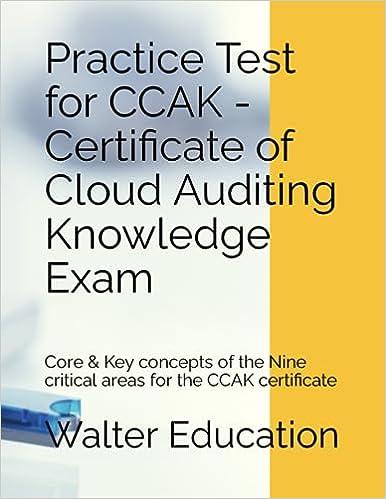Question
Upstate Growers (Upstate) is a cooperative corporation owned by 12 large apple farmers in New York State. Upstate is responsible for managing all 12 apple
Upstate Growers (Upstate) is a cooperative corporation owned by 12 large apple farmers in New York State. Upstate is responsible for managing all 12 apple orchards, picking and sorting the apples, and producing the final apple products. Apples are washed and sorted into three grades: large un-bruised apples, large bruised apples, or small apples. These three apple grades/categories comprise the final products produced and sold by Upstate. Large un-bruised apples are sold in supermarkets as whole eating apples after they are wrapped, packed, and shipped. Large bruised apples are peeled, cored, sauced, cooked, bottled, packed, and shipped to retailers as applesauce. And, small apples are juiced, cooked, filtered, and bottled as apple juice that is sold to supermarkets. Large un-bruised apples also can be converted into either applesauce or apple juice. Large bruised apples also can be juiced and bottled as apple juice like small apples, but cannot be sold as whole eating apples. All three types of apples can be sold as is at $11 per 100 pounds of whole apples for use as livestock feed without incurring any additional costs.
All three types of apples (large bruised, large un-bruised, and small) are sorted into crates containing 100 pounds of apples. The cost of wrapping, packing, and shipping 100 pounds of large un-bruised apples is $12, which can be sold as whole apples for $31. The cost of peeling, coring, cooking, saucing, bottling, packing, and shipping 100 pounds of bruised large apples is $60, which can be sold as applesauce for $80. The cost of juicing, cooking, filtering, bottling, packing, and shipping 100 pounds of small apples is $28, which can be sold as apple juice for $34.
Upstate harvested, washed, and sorted 4.6 million pounds of apples. The cost of operating the 12 orchards was $274,000, and the cost of picking, washing, and sorting the apples was $48,000. These 4.6 million pounds of apples yielded 9,300 (100-pound) crates of large un-bruised apples, 14,200 (100-pound) crates of large bruised apples, and 22,500 (100-pound) crates of small apples. The orchards operating costs and the costs of picking, washing and sorting the apples are allocated to three apple categories based on apple weight.
| a. | Prepare a table that calculates the net profits of processing (1) a 100-pound crate of large un-bruised apples, (2) applesauce from a 100-pound crate of apples, and (3) apple juice from a 100-pound crate of apples after allocating the orchards operating costs and the costs of picking, washing, and sorting the apples. |
| b. | Given the data in the problem, what should Upstate Growers do with each of the three sorted categories of apples harvested? In other words, to maximize firm value prepare a production plan for the large un-bruised apples (sell as whole eating apples, whole apples to be used as livestock feed, applesauce, or apple juice), the large bruised apples (sell as whole apples to be used as livestock feed, applesauce, or apple juice), and the small apples (sell as whole apples to be used as livestock feed or apple juice)? Explain the logic underlying your production plan. |
Step by Step Solution
There are 3 Steps involved in it
Step: 1

Get Instant Access to Expert-Tailored Solutions
See step-by-step solutions with expert insights and AI powered tools for academic success
Step: 2

Step: 3

Ace Your Homework with AI
Get the answers you need in no time with our AI-driven, step-by-step assistance
Get Started


